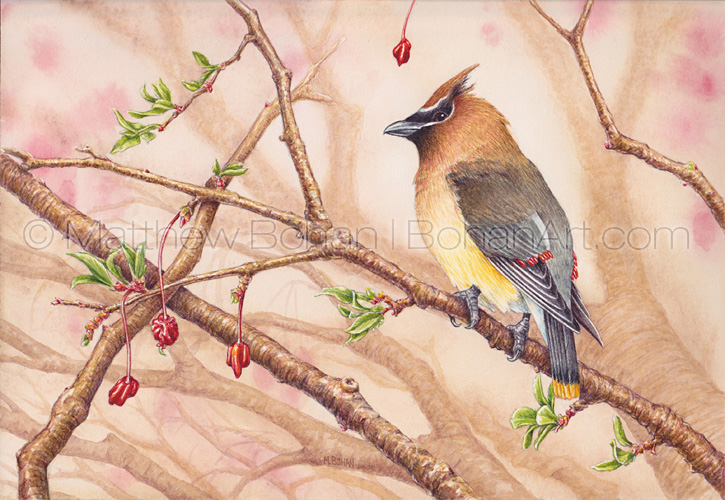

Cedar Waxwings have been on the top of my wife’s request list for a long time. She has also been asking me to post a time-lapse video of a painting, so I did both on this one. The good news is that she got what she wanted; the bad news is that partial credit or blame goes to her too! The video has about eight hours of painting compressed into 6.5 minutes. I’ve heard the expression “as boring as watching paint dry;” hopefully, watching sped up watercolors isn’t as bad.
Filming the time-lapse was a learning experience. I discovered that fluorescent light and time-lapse video don’t play nicely together. Although invisible to the naked eye, fluorescent lights are actually flickering all the time—though too quickly to see. The frame rate of the video amplifies the effect, kind of like the way wagon wheels seem to be moving backwards on old Westerns. Once you speed up the video, it becomes both highly visible and annoying! Toward the end of the project, I turned off the CF and ring fluorescent lamps, using incandescent and halogen options instead, which resolved the annoying banding issues. Live and learn.
Recording and watching the painting process was interesting and at times irritating. Here are some observations that I made: These paintings take a long time. It was only 7×10 inches, but it took about 8 hours. That’s just the painting. Including the time for sketching, masking and research would easily add a few more hours. It’s pretty interesting to me to see how quickly the early stages zip by and how long it takes to put in the million details that make for a crisp, highly rendered painting. As you can see, most parts of the painting have a myriad of layers of paint over them. If I do more time-lapses in the future, I’ll try to have a more visible palette so you can see the colors being mixed. This time I was trying to focus more on the painting’s progress. The annoying parts, like forgetting to turn on the video and missing a chunk of time, were a bummer. Also, the small camera was always in just the wrong place and got in the way of my swing-arm magnifier. When I was younger I could see all the tiny details unaided, but now a little help is appreciated.
I love Cedar Waxwings. Growing up we didn’t get many in our lawn. Currently we have a good population due to all the fruiting trees and shrubs we’ve planted over the years. We’ve even had the pleasure of finding waxwings nesting in one of our cherry trees. When we moved in, this yard provided a blank slate of sorts in regards to landscaping. It had grass, a few dying foundation plantings and four spruce trees. Liesl and I immediately started planting, keeping birds, butterflies and other wildlife in mind, and we now regularly reap the rewards.

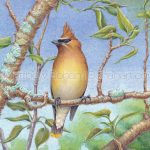
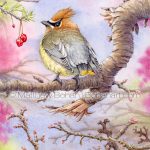
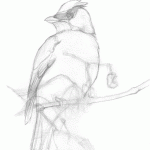
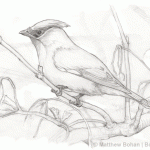
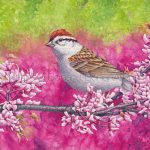

Denee Cedar
THANK YOU< THANK YOU< THANK YOU! This was so inspiring and helpful.
Matt
Glad you found it useful!